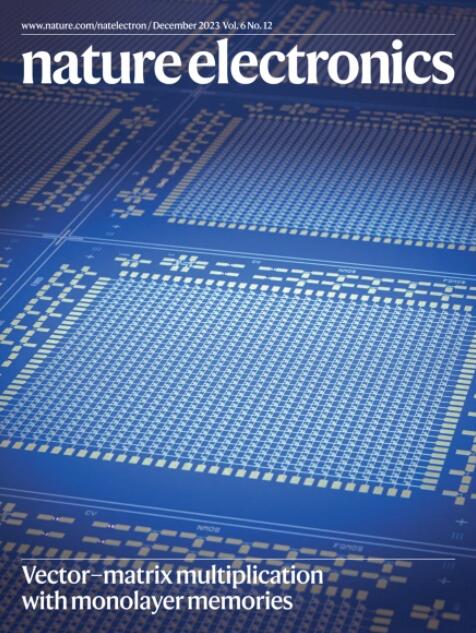用于量子电路的高效超导二极管和整流器
IF 40.9
1区 工程技术
Q1 ENGINEERING, ELECTRICAL & ELECTRONIC
引用次数: 0
摘要
超导电子学在节能经典计算和量子计算应用的发展中具有重要意义。这种系统需要非互易超导电路元件,如超导二极管,但在超导电路中集成多个超导二极管仍然是一个挑战。在这里,我们报道了一个超导二极管桥,它由多个超导二极管组成,具有可重复的特性和几个开尔文的工作温度。超导二极管由单质超导体钒和绝缘铁磁体硫化铕的薄膜双层制成。四个几乎完全相同的二极管在相同的超导薄膜上形成超导二极管桥。该桥可以作为一个全波整流器,效率高达42±5%,并提供交流(交流)到直流(直流)信号转换能力,频率高达40 kHz。本文章由计算机程序翻译,如有差异,请以英文原文为准。


Efficient superconducting diodes and rectifiers for quantum circuitry
Superconducting electronics is of use in the development of energy-efficient classical and quantum computing applications. Non-reciprocal superconducting circuit elements, such as superconducting diodes, are needed for such systems, but integrating several superconducting diodes in a superconducting circuit remains a challenge. Here we report a superconducting diode bridge that consists of multiple superconducting diodes with reproducible characteristics and operating temperatures of a few Kelvin. The superconducting diodes are fabricated from thin-film bilayers of the elemental superconductor vanadium and the insulating ferromagnet europium sulfide. Four practically identical diodes are patterned on the same superconducting film to create the superconducting diode bridge. The bridge can function as a full-wave rectifier with an efficiency up to 42 ± 5%, and offers alternating current (a.c.) to direct current (d.c.) signal conversion capabilities at frequencies up to 40 kHz. A superconducting diode bridge based on superconducting diodes can function as a full-wave rectifier with an efficiency up to 42 ± 5%, and can offer alternating current to direct current signal conversion capabilities at frequencies up to 40 kHz.
求助全文
通过发布文献求助,成功后即可免费获取论文全文。
去求助
来源期刊

Nature Electronics
Engineering-Electrical and Electronic Engineering
CiteScore
47.50
自引率
2.30%
发文量
159
期刊介绍:
Nature Electronics is a comprehensive journal that publishes both fundamental and applied research in the field of electronics. It encompasses a wide range of topics, including the study of new phenomena and devices, the design and construction of electronic circuits, and the practical applications of electronics. In addition, the journal explores the commercial and industrial aspects of electronics research.
The primary focus of Nature Electronics is on the development of technology and its potential impact on society. The journal incorporates the contributions of scientists, engineers, and industry professionals, offering a platform for their research findings. Moreover, Nature Electronics provides insightful commentary, thorough reviews, and analysis of the key issues that shape the field, as well as the technologies that are reshaping society.
Like all journals within the prestigious Nature brand, Nature Electronics upholds the highest standards of quality. It maintains a dedicated team of professional editors and follows a fair and rigorous peer-review process. The journal also ensures impeccable copy-editing and production, enabling swift publication. Additionally, Nature Electronics prides itself on its editorial independence, ensuring unbiased and impartial reporting.
In summary, Nature Electronics is a leading journal that publishes cutting-edge research in electronics. With its multidisciplinary approach and commitment to excellence, the journal serves as a valuable resource for scientists, engineers, and industry professionals seeking to stay at the forefront of advancements in the field.
 求助内容:
求助内容: 应助结果提醒方式:
应助结果提醒方式:


